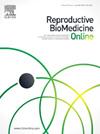调查峡部囊肿及其手术修复对生育能力的影响:来自系统回顾和荟萃分析的结果。
IF 3.5
2区 医学
Q1 OBSTETRICS & GYNECOLOGY
引用次数: 0
摘要
本系统综述的目的是量化峡部囊肿及其治疗对生育的影响。根据PRISMA指南进行综述,根据MOOSE指南进行meta分析。对29项研究数据的荟萃分析显示,43%(率0.43,95% CI 0.33-0.54;n = 2038)有症状性峡部膨出的妇女报告继发性不孕症为主要症状(证据质量[QOE]:非常低)。在体外受精条件下,有峡部囊肿的妇女的活产率(LBR)低于以前没有峡部囊肿的剖腹产妇女(优势比[OR] 0.57, 95% CI 0.49-0.66;n = 7719,8项研究)(QOE:高)。10项研究报道了不孕症妇女峡部宫腔镜修复后的LBR (LBR 0.63, 95% CI 0.49-0.77;QOE:非常低)。7项研究报道了峡部腹腔镜修复后的LBR (LBR 0.51, 95% CI 0.40-0.63;QOE:非常低)。这些发现表明峡部细胞在不孕症的病理生理中起作用。宫腔镜和腹腔镜手术修复成为治疗盆腔膨出妇女不孕症的有希望的选择。为了提供全面的咨询,必须将这些发现与潜在证据的弱点一起传达给患者。本文章由计算机程序翻译,如有差异,请以英文原文为准。
Investigating the impact of isthmocele and its surgical repair on fertility: results from a systematic review and meta-analysis
The aim of this systematic review was to quantify the impact of isthmocele and its treatment on fertility. The review was conducted according to the PRISMA guidelines, and the meta-analysis according to the MOOSE guidelines. The meta-analysis of data from 29 studies showed that 43% (rate 0.43, 95% CI 0.33–0.54; n = 2038) of women with a symptomatic isthmocele reported secondary infertility as a presenting symptom (quality of evidence [QOE)]: very low). In the IVF setting, women with an isthmocele were shown to have a lower live birth rate (LBR) than women with a previous Caesarean section without an isthmocele (odds ratio [OR] 0.57, 95% CI 0.49–0.66; n = 7719, eight studies) (QOE: high). Ten studies reported the LBR after isthmocele hysteroscopic repair in a cohort of infertile women (LBR 0.63, 95% CI 0.49–0.77; QOE: very low). Seven studies reported the LBR after isthmocele laparoscopic repair (LBR 0.51, 95% CI 0.40–0.63; QOE: very low). The combination of these findings suggests that isthmoceles play a role in the pathophysiology of infertility. Hysteroscopic and laparoscopic surgical repair emerged as promising options for the treatment of infertility in women with an isthmocele. To provide comprehensive counselling, these findings must be communicated to patients, together with the weaknesses of the underlying evidence.
求助全文
通过发布文献求助,成功后即可免费获取论文全文。
去求助
来源期刊

Reproductive biomedicine online
医学-妇产科学
CiteScore
7.20
自引率
7.50%
发文量
391
审稿时长
50 days
期刊介绍:
Reproductive BioMedicine Online covers the formation, growth and differentiation of the human embryo. It is intended to bring to public attention new research on biological and clinical research on human reproduction and the human embryo including relevant studies on animals. It is published by a group of scientists and clinicians working in these fields of study. Its audience comprises researchers, clinicians, practitioners, academics and patients.
Context:
The period of human embryonic growth covered is between the formation of the primordial germ cells in the fetus until mid-pregnancy. High quality research on lower animals is included if it helps to clarify the human situation. Studies progressing to birth and later are published if they have a direct bearing on events in the earlier stages of pregnancy.
 求助内容:
求助内容: 应助结果提醒方式:
应助结果提醒方式:


